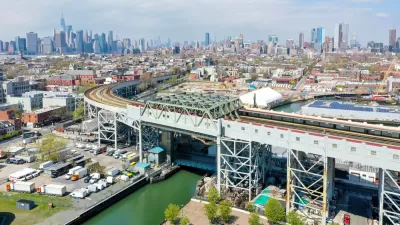This research shows that renters in high-cost cities can be just as prone to NIMBYism as homeowners, even as they theoretically support more housing. This is housing supply's collective action problem.

Common wisdom holds that homeowners in high-cost cities trend toward NIMBYism, while renters favor development. In research for Harvard's Joint Center for Housing Studies, Michael Hankinson puts that assumption to the test.
He writes, "Despite its popularity as a scapegoat, there is no individual-level, empirical data on how NIMBYism operates and among whom." To gather that data, Hankinson turned to the most unaffordable market of all: San Francisco. His polling data suggests that "in high-housing cost cities, renters and homeowners both oppose new residential developments proposed for their neighborhoods."
In some cases, local NIMBYism among renters actually exceeded that of homeowners. "This seeming disconnect between views on citywide and local development policies creates a classic collective action problem for those policymakers who must find ways to reconcile the conflicting views."
Renters in high-cost areas were still more supportive of citywide increases in housing supply, just not on their block. "In fact, renters in expensive cities show just as much support for a 10 percent increase in their city's housing supply as renters in more affordable cities. The main difference between these groups of renters is their NIMBYism."
FULL STORY: When Do Renters Behave Like Homeowners? High Rent, Price Anxiety, and NIMBYism

Planetizen Federal Action Tracker
A weekly monitor of how Trump’s orders and actions are impacting planners and planning in America.

San Francisco's School District Spent $105M To Build Affordable Housing for Teachers — And That's Just the Beginning
SFUSD joins a growing list of school districts using their land holdings to address housing affordability challenges faced by their own employees.

The Tiny, Adorable $7,000 Car Turning Japan Onto EVs
The single seat Mibot charges from a regular plug as quickly as an iPad, and is about half the price of an average EV.

Seattle's Plan for Adopting Driverless Cars
Equity, safety, accessibility and affordability are front of mind as the city prepares for robotaxis and other autonomous vehicles.

As Trump Phases Out FEMA, Is It Time to Flee the Floodplains?
With less federal funding available for disaster relief efforts, the need to relocate at-risk communities is more urgent than ever.

With Protected Lanes, 460% More People Commute by Bike
For those needing more ammo, more data proving what we already knew is here.
Urban Design for Planners 1: Software Tools
This six-course series explores essential urban design concepts using open source software and equips planners with the tools they need to participate fully in the urban design process.
Planning for Universal Design
Learn the tools for implementing Universal Design in planning regulations.
Smith Gee Studio
City of Charlotte
City of Camden Redevelopment Agency
City of Astoria
Transportation Research & Education Center (TREC) at Portland State University
US High Speed Rail Association
City of Camden Redevelopment Agency
Municipality of Princeton (NJ)





























